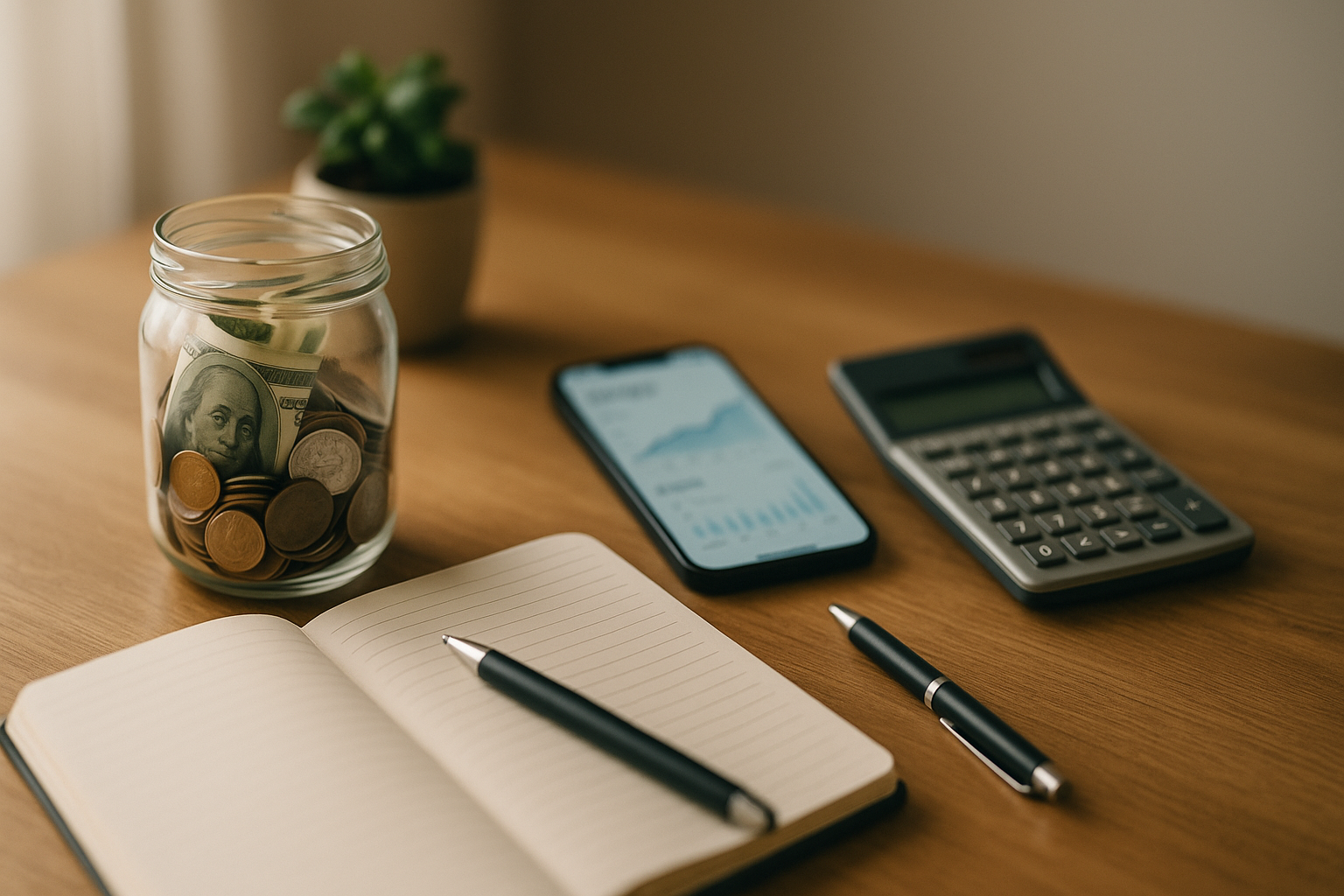Quick win: Build a starter emergency fund of $1,000 in 30–60 days with a simple, repeatable system—no extreme cuts, just smart moves that protect you from surprise bills.
If a flat tire or urgent copay would wreck your week, your first mission isn’t investing—it’s a cash cushion. Use the guide below for practical emergency savings tips you can finish in an afternoon and maintain with a light weekly routine.
What Is a Starter Fund (and Why $1,000)?
A starter fund is a small, ready-to-use cash buffer for true emergencies—car repair, medical bill, essential home fix. It’s not the final goal (3–6 months of expenses), but it breaks the paycheck-to-paycheck cycle and keeps surprises off your credit card.
Open & Park: Where the Money Lives
- High-Yield Savings Account (HYSA): Separate from checking, easy to access, earns some interest, and less tempting to spend.
- Nickname it: “Emergency Only” in your banking app to reduce slip-ups.
- No debit card: Access via transfer only, so you pause before spending.
The 30–60 Day Plan (4 Steps)
Step 1: Set your target and automate (10 minutes)
- Pick your goal date (30–60 days) and divide $1,000 by paychecks. Example: paid biweekly → $250 per paycheck.
- Schedule an automatic transfer the day after payday into your HYSA. Start smaller if needed—then step up next payday.
Step 2: Free $100–$300/month from “low-joy” spending (15 minutes)
- Scan the last month for expenses you barely enjoyed (unused subscriptions, impulse delivery, add-ons at checkout).
- Cancel or pause two items and redirect that money to your emergency transfer. Label it “flat tire insurance.”
Step 3: Add one-time boosts (same afternoon)
- Sell 3 things: List a gadget, small furniture, and brand-name clothing on local marketplaces.
- Mini side gig: 2–4 hours of tutoring, pet-sitting, delivery runs, or yardwork this weekend.
- Windfalls: Tax refund or rebate? Skim 50–100% to the fund until you hit $1,000.
Step 4: Run a 10-minute weekly reset
- Check balances: Bills / Spend / Emergency.
- Nudge the transfer up by $5–$20 if last week came in under budget.
- Move stray dollars (cashback, marketplace payment) straight into the HYSA.
When to Use Your Starter Emergency Fund
- Yes: Car repair you need to get to work; urgent medical/dental; essential home repair (leak, HVAC in winter); unexpected travel for family emergency.
- No: Sales, vacations, holiday gifts, routine bills you saw coming. Those belong in your regular budget or sinking funds.
Rebuild Rules (so it doesn’t vanish)
If you spend from the fund, pause extras and refill it first. Re-activate the automation to the HYSA until it’s back to $1,000. Then split new dollars between debt payoff and growing the full 3–6 months fund.
Common Mistakes (and Easy Fixes)
- Keeping it in checking: It blends with spending. Fix: Separate HYSA nicknamed “Emergency Only.”
- Waiting for “extra” money: Extra rarely arrives. Fix: Automate the transfer the day after payday.
- Going too hard, then quitting: Over-aggressive amounts trigger overdrafts. Fix: Start smaller, step up weekly.
- Using it for non-emergencies: The cushion evaporates. Fix: Write your “Yes/No” rules on a sticky note in the banking app.
Example: Two-Paycheck Path to $1,000 (6 weeks)
- Auto-transfer $200 after each paycheck → $400/month
- Cancel two subs ($12 + $15) + reduce delivery ($25) → +$52/month
- Sell items / weekend gig → +$300 one-time
Total in ~6 weeks: $400 + $52 + $300 ≈ $752; increase one transfer by $125 next month to cross $1,000.
FAQ
Is $1,000 enough?
It’s a starter cushion—meant to stop the bleeding. After you hit $1,000, grow toward 1–3 months of essentials, then 3–6 months as your situation allows.
Should I build a starter fund or pay off debt first?
Build the initial $500–$1,000 so surprises don’t go on the card, then split new dollars between high-interest debt and a larger emergency fund.
Where exactly should I keep it?
In a separate HYSA at a reputable bank or credit union, not invested and not mixed with everyday spending. You want quick access and low temptation.

Leave a Reply